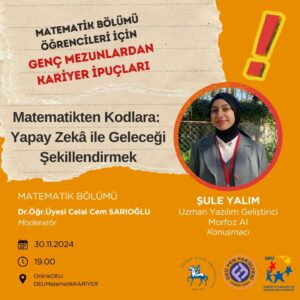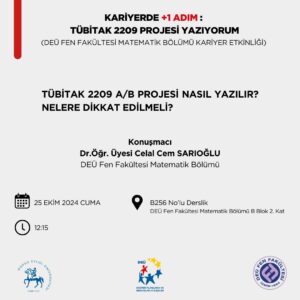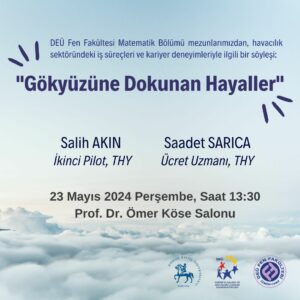Mustafa Eren Taşlı, Dokuz Eylül University. Date: 26th of December, 2024, Wednesday, Time: 15.00 – 16.00. Place: Dokuz Eylül Univ., Tınaztepe Campus, Faculty of Science, Department of Mathematics, Classroom B255.
Abstract: We will define symmetric polynomials and the elementary symmetric polynomials in indeterminates over a field
. The elementary symmetric polynomials in the indeterminates
are as follows:
The Fundamental Theorem of Symmetric Polynomials states that any symmetric polynomial can be expressed as a polynomial in the elementary symmetric polynomials, that is:
Theorem. Let be a symmetric polynomial in the
indeterminates
over a field
. Then, there exists a polynomial
in the
indeterminates
such that
where are the above elementary symmetric polynomials of the
indeterminates
. Moreover, the polynomial
is uniquely determined.
We will prove this theorem using the graded lexicographic order for multivariable polynomials.
Using the recurrence relation from the Newton Identities, we will learn how to express the sum of powers of the indeterminates, that is, the polyomials
for a positive integer , as polynomials in terms of the elementary symmetric polynomials. We will reinforce this understanding with examples.
The discriminant in the indeterminates over the field
is given by:
The discriminant is a symmetric polynomial, and we will express it in terms of the elementary symmetric polynomials using determinants.
This seminar, as part of my graduation project titled Symmetric Polynomials, Newton’s Identities, Discriminants, and Resultants, serves as an introduction to a method for calculating the discriminant () of an
-th degree polynomial without finding its roots.



